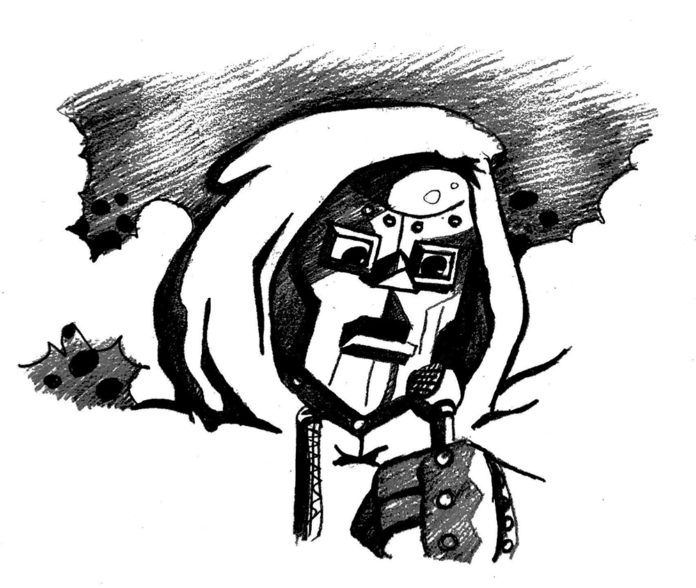Twenty years ago, hip-hop came to the end of a decade that saw commercialization sweep the genre into American popular culture for the foreseeable future. As the 1990s wore on, New York’s versatile boroughs retained their prestige but lost their stylistic monopoly on the genre. Regional varieties in Los Angeles, Texas, New Orleans and practically everywhere else thrived through their own ecosystems and showcased the country’s diversity. Today’s contextless streaming platforms work hard to establish a post-regional playing field, but it is worth acknowledging that New York has not produced a skilled, influential and culturally relevant rapper since Max B. However, the new school of rising female rappers owe more to Nicki Minaj than the industry and the public want to admit. The sustainability of colorful East Coast styles was made possible in part by the record in focus. The British-born and Long Island-formed rapper MF Doom released his debut solo album “Operation Doomsday” April 20, 1999. The moniker is a nod to his family surname, Dumile. Apocalyptic instinct is embedded into his character and his infamous mask created the self-proclaimed alias “the metal faced terrorist.” Doom’s career is an incision on the surface of a standard hip-hop history where A Tribe Called Quest has the normcore immortality of the Beatles. Despite sometimes being reduced to an Adult Swim association, he remains a symbolic trophy for an underground and independent aesthetic.
Doom lingers in modern hip-hop because his mythology and theatrical reintroductions carry the uniqueness of a legend. He has released music under additional names such as Viktor Vaughn, King Geedorah and his first signature Zev Love X. In 1988, he formed the group KMD along with his brother DJ Subroc and an MC named Onyx the Birthstone Kid. They released their debut record in 1991 and titled it “Mr. Hood.” The album art for “Peachfuzz,” the album’s lead single, is a painting of a Sambo caricature trapped behind an anti-symbol. This image introduced the group as a conscious unit seeking to define their identity. KMD synthesized Tribe’s informal professionalism, De La’s cleverness, Black Sheep’s folly and Brand Nubian’s black Muslim codes. This is evident on Peachfuzz, where an 18-year-old Doom raps through the uncontrollable awkwardness of adolescence as a group of girls laughs him down in the background. Nature’s stifling social stage renders him unserious, but wise. Doom carried that romantic innocence into his 2004 song “Fancy Clown.”
After Doom testified before Congress to prevent artistic censorship, KMD was dropped from Elektra records over the very same issue. Their second album, “Black Bastards,” was scheduled to release in 1993, but the label cut ties after the proposed cover depicted Sambo being lynched. This disappointment was compounded by Subroc’s tragic death. Doom lost his brother and his record deal in the span of a week. He faded into obscurity for six years before returning as MF Doom for radio host Bobbito’s independent label Fondle Em Records. Throughout the 90s, the “Stretch and Bobbito Show” had the unique status of a career launch pad and an amateur clubhouse. By the end of their run, Bobbito sharpened his ear to a host of records with bugged-out run-on sentences and unique lyrical structures. Groups like The Cenobites and Company Flow signified insider knowledge and fandom. Rawkus, Duck Down and Fondle Em are the independent record labels who facilitated the continuation of a late 80s early 90s style. “Operation Doomsday” is the strongest and most well-known album Fondle Em ever released.
The record helped establish underground rap as an official marginality in terms of commercial genre. One could develop their talents without the burden of forcing a crossover. MF Doom created his character out of pain and the notorious mask represents a hardened personality. He is lured by disaster and destruction like a mad scientist. The cover art is a portrait of him rapping while lightning and fire obliterate New York City. It is as if he is saying, “The decade is over, but I’m here to stay.” The title track features Peebles the Invisible Girl, and her gentle hums push toward rebirth while her words carry the weight of the past. A sample from Sade’s “Kiss of Life” stitches the production together and it smoothes over the edges in Doom’s rhyme scheme. “The Finest” pulls from the S.O.S. Band’s sweet track of the same name. He produced the entire record himself and the sounds range from “Rhymes like Dimes” to “Tick Tick.” The track “Dead Bent” is triumphant in the vein of Ghostface Killah.
“Operation Doomsday” announced Doom’s hyper-descriptive ability within a left-field style. Since 1999, rappers like MF Grimm, Count Bass D and Earl Sweatshirt have drawn upon his spirit and nonconformism. For a newer generation, Earl is an artist with subjective commercial appeal and carefully protected integrity. Even as a young adult, his rugged voice retains a teenage tone. Count Bass D is the most eclectic disciple and his smoother style grants him distinction. Underground and independent rappers bask in Doom’s rule-breaking flow yet none can truly mimic it. Twenty years later, the shadow of his debut record looms large.
![]()



































